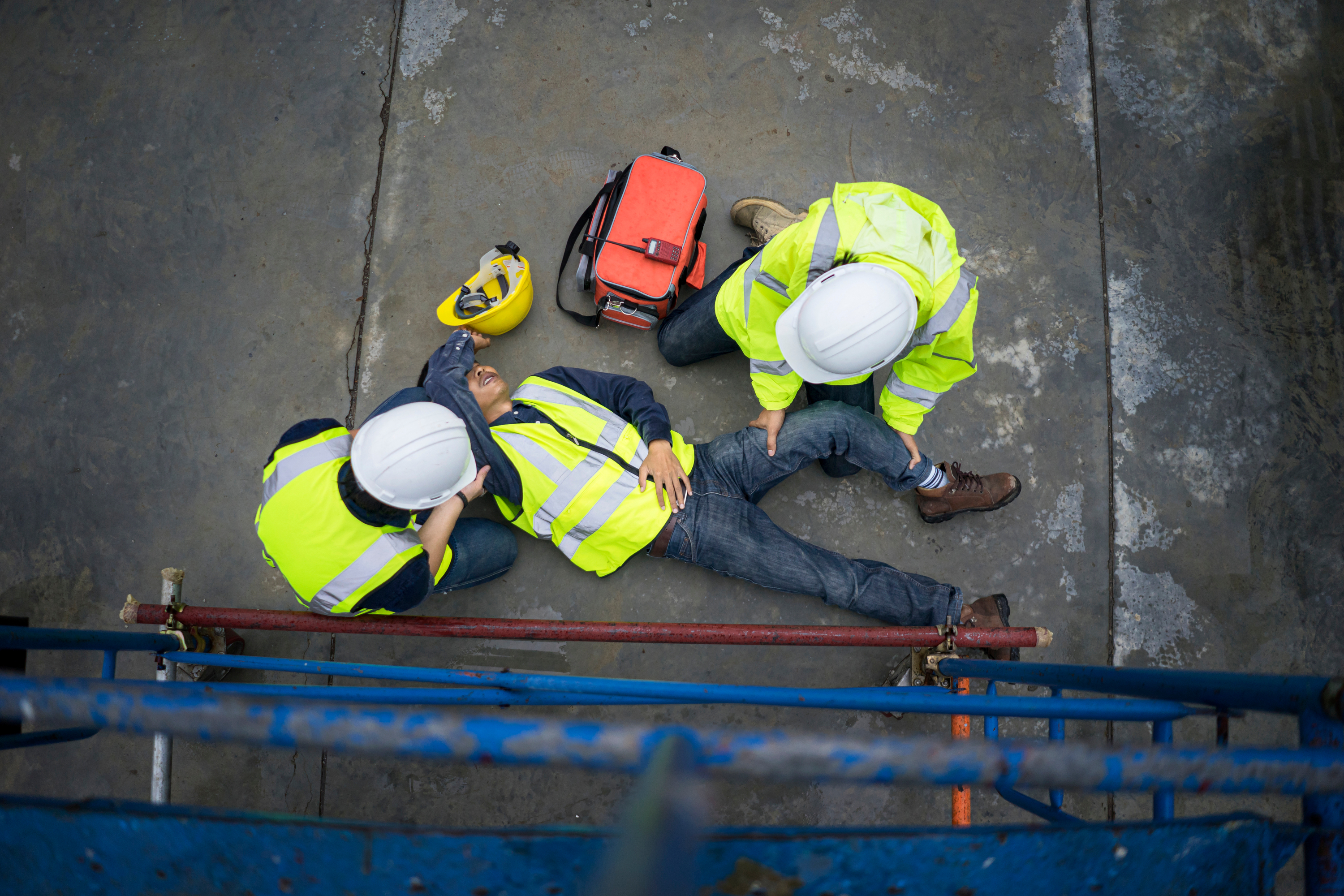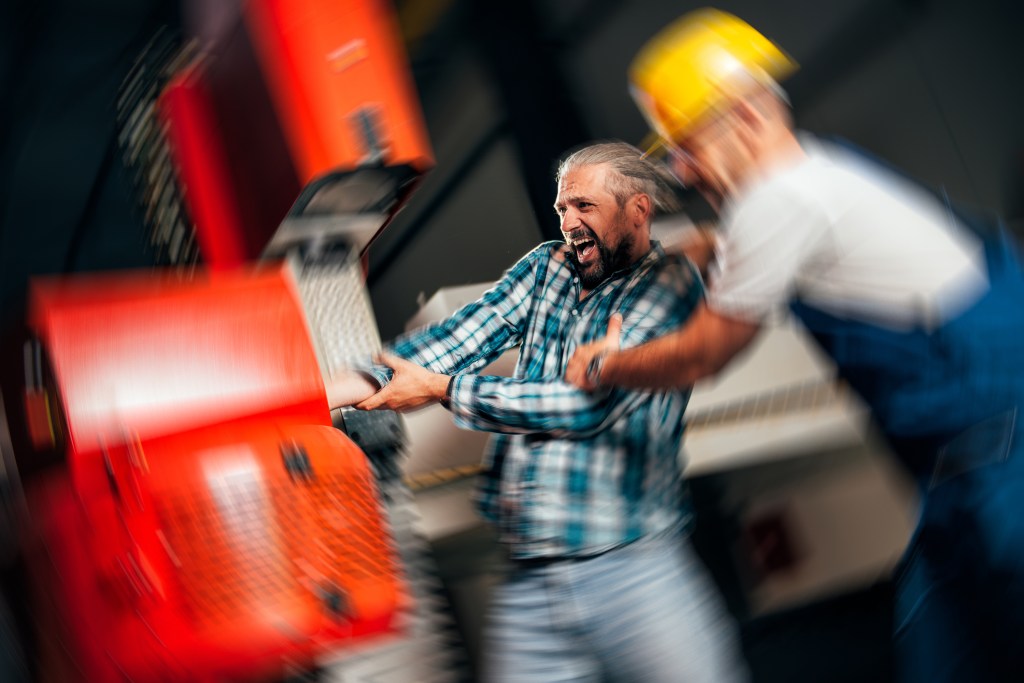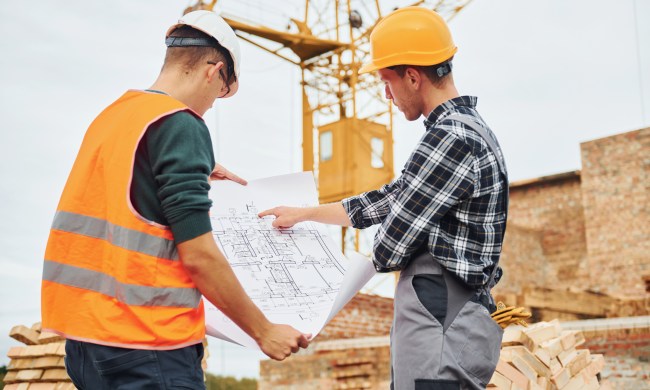Construction site accidents are unavoidable. Hard physical labor mixed with heavy machinery and hazardous materials all combine to dramatically increase workplace risks. However, if you’re in the construction industry, you were well aware of these risks when you signed up. Workplace hazards come with skilled trades that you don’t have if you sit behind a desk.
Over the past few decades, accidents in construction have become less frequent thanks to safety regulations and systems put in place by OSHA. Also, construction personal protective equipment has improved as technology has advanced.
Nonetheless, accidents still happen. The number of injuries that occur from construction site accidents ranges in the hundreds of thousands each year. In the most recent U.S. Bureau of Labor Statistics report of the National Census of Fatal Occupational Injuries, over 1,500 people died because of construction (or construction-related) injuries in 2019.
Although many accidents can happen on the construction site, OSHA has labeled four main categories of accidents as “the fatal four,” which account for the largest percentage of deaths. We’ll let you know what those are and the best ways to prevent them, as well as some other common accidents.

Most fatal construction site accidents
1. Electrocution
Some of the most frightening and dangerous construction site hazards involve electricity. Electrical circuits lacking ground faults, contact with power lines, a missing or discontinuous path to the ground, improper use of equipment, and unaccounted for environmental conditions can all result in electrocution.
Electrocution isn’t the only injury that can emerge from electricity. Eye damage can result from electrical arcs, and they can set you ablaze if you’re not wearing flame-resistant clothing.
How to prevent
Two of the best ways to avoid electrical accidents are to have the appropriate PPE and to use the proper labeling that provides caution of live currents. Using gloves, tools, and boots that contain rubber can ground you in the instance of a shock. Also, having eyewear that protects against ultraviolet light can safeguard your eyes from arcs, and flame-resistant clothing helps keep you from catching on fire.
When dealing with electricity, communication is paramount if you’re working with a team. By announcing what you’re doing and double-checking with team members, you can avoid many unnecessary accidents.
2. Falls
Falls account for the most construction-related injuries. These incidents aren’t just of the slip-and-fall variety. Faulty scaffolding and misuse of ladders and other equipment can cause falls. Many falls are also caused by protruding objects like steel bars and pipes and unprotected/unmarked openings in walls or floors.
How to prevent
When it comes to falls, there’s only so much PPE can do. Wearing boots with anti-slip soles and using the correct harness safety equipment when necessary can help. However, negligence, improper use of equipment, and not following safety procedures are among the leading causes of fall injuries.
Being aware of your surroundings and using tools like ladders and lifts correctly can prevent many fall accidents. Also, being conscious of things that can lead to others falling, such as putting away tools or marking hazards, can help reduce injuries.
3. Struck by objects
Being struck by an object on a construction work site can come in many forms and cause minor injuries to death. In multilevel construction sites, falling objects are a common culprit. There are also instances in roadside construction where getting struck by a motorist, unfortunately, occurs more often than it should.
How to prevent
Continually wearing the right PPE is the best defense against being struck by objects. Getting hit in the head by a falling hammer can definitely prevent severe injury or death while wearing a hard hat. A reflective vest can help outside motorists better see and avoid road construction workers. Clear communication among workers when moving dangerous objects around the work site is another easy way to prevent injury.

4. Being caught between objects
Getting caught between objects or within machinery in construction is very dangerous and often can lead to death or loss of limbs. Many times, these injuries occur simply because of absentmindedness. Other times, it happens because the proper procedures were not followed. From time to time, it’s just a freak accident.
How to prevent
In most cases, using common sense and your best judgment to stay safe can prevent many instances of getting cause between objects. When dealing with heavy machinery, obeying workplace procedures and paying attention to clothing or tools that could get stuck in a machine is crucial for safety. Never try to take shortcuts between machines or vehicles while they’re in operation.
Other common construction injuries and how to prevent them
5. Fires, gas leaks, and explosions
There’s a reason you’re not supposed to smoke on the work site, and the main one is that you could potentially ignite explosive gases. Gas leaks, fires, and explosions are usually freak accidents. Wearing PPE is the best way to gain immediate protection. However, using gas detection meters when working around gas lines can help evacuate an area to keep workers safe until someone can fix the leak.
Flammable gas isn’t the only dangerous gas on the work site. Carbon monoxide from machinery can also lead to serious illness or death. Using respirators and masks in areas of poor ventilation while machinery is used is an excellent way to prevent this type of injury.
6. Exposure to toxins or chemicals
Many times, construction calls for using chemical agents that are toxic to breathe or touch. Be sure to read all the manufacturer warnings when using any chemical and use the proper PPE to avoid injuries.
7. Stress injuries from repetitive actions
Specific jobs require construction workers to perform repetitive actions that can cause permanent bodily injury over time. A good example is a tile layer, who is constantly on their knees. Although there’s no escaping the physical demands of the work, wearing the proper protective gear, stretching, and taking breaks when needed can reduce the impact.
By learning about the most common accidents in construction, you can be more aware of your actions while performing your duties on the work site, doing your best to avoid injuries. Wearing the proper PPE, in most cases, will help prevent injuries or at least minimize the damage.



